- Home
- J. K. Rowling
The Hogwarts Library Collection Page 7
The Hogwarts Library Collection Read online
Page 7
We find no further mention of the sport played on Queerditch Marsh until a century later, when the wizard Goodwin Kneen took up his quill to write to his Norwegian cousin Olaf. Kneen lived in Yorkshire, which demonstrates the spread of the sport throughout Britain in the hundred years after Gertie Keddle first witnessed it. Kneen’s letter is deposited in the archives of the Norwegian Ministry of Magic.
Dear Olaf,
How are you? I am well, though Gunhilda has got a touch of dragon pox.
We enjoyed a spirited game of Kwidditch last Saturday night, though poor Gunhilda was not up to playing Catcher, and we had to use Radulf the blacksmith instead. The team from Ilkley played well though was no match for us, for we had been practising hard all month and scored forty-two times. Radulf got a Blooder in the head because old Ugga wasn’t quick enough with his club. The new scoring barrels worked well. Three at each end on stilts, Oona from the inn gave us them. She let us have free mead all night because we won as well. Gunhilda was a bit angry I got back so late. I had to duck a couple of nasty jinxes but I’ve got my fingers back now.
I’m sending this with the best owl I’ve got, hope he makes it.
Your cousin,
Goodwin
Here we see how far the game has progressed in a century. Goodwin’s wife was to have played ‘Catcher’ – probably the old term for Chaser. The ‘Blooder’ (undoubtedly Bludger) that hit Radulf the blacksmith should have been fended off by Ugga, who was obviously playing Beater, as he was carrying a club. The goals are no longer trees, but barrels on stilts. One crucial element in the game was still missing, however: the Golden Snitch. The addition of the fourth Quidditch ball did not occur until the middle of the thirteenth century and it came about in a curious manner.
Chapter Four
The Arrival of the Golden Snitch
FROM THE EARLY 1100s , Snidget-hunting had been popular among many witches and wizards. The Golden Snidget (see Fig. B below) is today a protected species, but at that time Golden Snidgets were common in northern Europe, though difficult to detect by Muggles because of their aptitude at hiding and their very great speed.
The diminutive size of the Snidget, coupled with its remarkable agility in the air and talent at avoiding predators, merely added to the prestige of wizards who caught them. A twelfth-century tapestry preserved in the Museum of Quidditch shows a group setting out to catch a Snidget. In the first portion of the tapestry, some hunters carry nets, others use wands, and still others attempt to catch the Snidget with their bare hands. The tapestry reveals the fact that the Snidget was often crushed by its captor. In the final portion of the tapestry we see the wizard who caught the Snidget being presented with a bag of gold.
Snidget-hunting was reprehensible in many ways. Every right-minded wizard must deplore the destruction of these peace-loving little birds in the name of sport. Moreover, Snidget-hunting, which was usually undertaken in broad daylight, led to more Muggle broomstick sightings than any other pursuit. The Wizards’ Council of the time, however, was unable to curb the sport’s popularity – indeed, it appears that the Council itself saw little wrong with it, as we shall see.
Fig. B
Snidget-hunting finally crossed paths with Quidditch in 1269 at a game attended by the Chief of the Wizards’ Council himself, Barberus Bragge. We know this because of the eyewitness account sent by Madam Modesty Rabnott of Kent to her sister Prudence in Aberdeen (this letter is also on display in the Museum of Quidditch). According to Madam Rabnott, Bragge brought a caged Snidget to the match and told the assembled players that he would award one hundred and fifty Galleons1 to the player who caught it during the course of the game. Madam Rabnott explains what happened next:
The players rose as one into the air, ignoring the Quaffle and dodging the Blooders. Both Keepers abandoned the goal baskets and joined the hunt. The poor little Snidget shot up and down the pitch seeking a means of escape, but the wizards in the crowd forced it back with Repelling Spells. Well, Pru, you know how I am about Snidget-hunting and what I get like when my temper goes. I ran on to the pitch and screamed, ‘Chief Bragge, this is not sport! Let the Snidget go free and let us watch the noble game of Cuaditch which we have all come to see!’ If you’ll believe me, Pru, all the brute did was laugh and throw the empty birdcage at me. Well, I saw red, Pru, I really did. When the poor little Snidget flew my way I did a Summoning Charm. You know how good my Summoning Charms are, Pru – of course it was easier for me to aim properly, not being mounted on a broomstick at the time. The little bird came zooming into my hand. I stuffed it down the front of my robes and ran like fury.
Well, they caught me, but not before I’d got out of the crowds and released the Snidget. Chief Bragge was very angry and for a moment I thought I’d end up a horned toad, or worse, but luckily his advisers calmed him down and I was only fined ten Galleons for disrupting the game. Of course I’ve never had ten Galleons in my life, so that’s the old home gone.
I’ll be coming to live with you shortly, luckily they didn’t take the Hippogriff. And I’ll tell you this, Pru, Chief Bragge would have lost my vote if I’d had one.
Your loving sister,
Modesty
Madam Rabnott’s brave action might have saved one Snidget, but she could not save them all. Chief Bragge’s idea had for ever changed the nature of Quidditch. Golden Snidgets were soon being released during all Quidditch games, one player on each team (the Hunter) having the sole task of catching it. When the bird was killed, the game was over and the Hunter’s team was awarded an extra one hundred and fifty points, in memory of the one hundred and fifty Galleons promised by Chief Bragge. The crowd undertook to keep the Snidget on the pitch by using the Repelling Spells mentioned by Madam Rabnott.
By the middle of the following century, however, Golden Snidget numbers had fallen so low that the Wizards’ Council, now headed by the considerably more enlightened Elfrida Clagg, made the Golden Snidget a protected species, outlawing both its killing and its use in Quidditch games. The Modesty Rabnott Snidget Reservation was founded in Somerset and a substitute for the bird was frantically sought to enable the game of Quidditch to proceed.
The invention of the Golden Snitch is credited to the wizard Bowman Wright of Godric’s Hollow. While Quidditch teams all over the country tried to find bird substitutes for the Snidget, Wright, who was a skilled metal-charmer, set himself to the task of creating a ball that mimicked the behaviour and flight patterns of the Snidget. That he succeeded perfectly is clear from the many rolls of parchment he left behind him on his death (now in the possession of a private collector), listing the orders that he had received from all over the country. The Golden Snitch, as Bowman called his invention, was a walnut-sized ball exactly the weight of a Snidget. Its silvery wings had rotational joints like the Snidget’s, enabling it to change direction with the lightning speed and precision of its living model. Unlike the Snidget, however, the Snitch had been bewitched to remain within the boundaries of the field. The introduction of the Golden Snitch may be said to have finished the process begun three hundred years before on Queerditch Marsh. Quidditch had been truly born.
1. Equivalent to over a million Galleons today. Whether Chief Bragge intended to pay or not is a moot point.
Chapter Five
Anti-Muggle Precautions
IN 1398 THE WIZARD Zacharias Mumps set down the first full description of the game of Quidditch. He began by emphasising the need for anti-Muggle security while playing the game: ‘Choose areas of deserted moorland far from Muggle habitations and make sure that you cannot be seen once you take off on your brooms. Muggle-repelling charms are useful if you are setting up a permanent pitch. It is advisable, too, to play at night.’
We deduce that Mumps’s excellent advice was not always followed from the fact that the Wizards’ Council outlawed all Quidditch-playing within fifty miles of towns in 1362. Clearly the popularity of the game was increasing rapidly, for the Council found it necessary to amend the ban in 13
68, making it illegal to play within a hundred miles of a town. In 1419, the Council issued the famously worded decree that Quidditch should not be played ‘anywhere near any place where there is the slightest chance that a Muggle might be watching or we’ll see how well you can play whilst chained to a dungeon wall’.
As every school-age wizard knows, the fact that we fly on broomsticks is probably our worst-kept secret. No Muggle illustration of a witch is complete without a broom and however ludicrous these drawings are (for none of the broomsticks depicted by Muggles could stay up in the air for a moment), they remind us that we were careless for too many centuries to be surprised that broomsticks and magic are inextricably linked in the Muggle mind.
Adequate security measures were not enforced until the International Statute of Wizarding Secrecy of 1692 made every Ministry of Magic directly responsible for the consequences of magical sports played within their territories. This subsequently led, in Britain, to the formation of the Department of Magical Games and Sports. Quidditch teams that flouted the Ministry guidelines were henceforth forced to disband. The most famous instance of this was the Banchory Bangers, a Scottish team renowned not only for their poor Quidditch skills but also for their post-match parties. After their 1814 match against the Appleby Arrows (see Chapter Seven), the Bangers not only allowed their Bludgers to zoom away into the night, but also set out to capture a Hebridean Black for their team mascot. Ministry of Magic representatives apprehended them as they were flying over Inverness and the Banchory Bangers never played again.
Nowadays Quidditch teams do not play locally, but travel to pitches which have been set up by the Department of Magical Games and Sports where adequate anti-Muggle security is maintained. As Zacharias Mumps so rightly suggested six hundred years ago, Quidditch pitches are safest on deserted moors.
Chapter Six
Changes in Quidditch since the Fourteenth Century
Pitch
ZACHARIAS MUMPS DESCRIBES the fourteenth-century pitch as oval-shaped, five hundred feet long and a hundred and eighty feet wide with a small central circle (approximately two feet in diameter) in the middle. Mumps tells us that the referee (or Quijudge, as he or she was then known) carried the four balls into this central circle while the fourteen players stood around him. The moment the balls were released (the Quaffle was thrown by the referee; see ‘The Quaffle’ below), the players raced into the air. The goalposts in Mumps’s time were still large baskets on poles, as seen in Fig. C (below).
In 1620 Quintius Umfraville wrote a book called The Noble Sport of Warlocks, which included a diagram of the seventeenth-century pitch (see Fig. D below). Here we see the addition of what we know as ‘scoring areas’ (see ‘Rules’ below). The baskets on top of the goalposts were considerably smaller and higher than in Mumps’s time.
Fig. C
By 1883 baskets had ceased to be used for scoring and were replaced with the goalposts we use today, an innovation reported in the Daily Prophet of the time (see below). The Quidditch pitch has not altered since that time.
Fig. D
Bring Back Our Baskets!
That was the cry heard from Quidditch players across the nation last night as it became clear that the Department of Magical Games and Sports had decided to burn the baskets used for centuries for goal-scoring in Quidditch.
‘We’re not burning them, don’t exaggerate,’ said an irritable-looking Departmental representative last night when asked to comment. ‘Baskets, as you may have noticed, come in different sizes. We have found it impossible to standardise basket size so as to make goalposts throughout Britain equal. Surely you can see it’s a matter of fairness. I mean, there’s a team up near Barnton, they’ve got these minuscule little baskets attached to the opposing team’s posts, you couldn’t get a grape in them. And up their own end they’ve got these great wicker caves swinging around. It’s not on. We’ve settled on a fixed hoop size and that’s it. Everything nice and fair.’
At this point, the Departmental representative was forced to retreat under a hail of baskets thrown by the angry demonstrators assembled in the hall. Although the ensuing riot was later blamed on goblin agitators, there can be no doubt that Quidditch fans across Britain are tonight mourning the end of the game as we know it.
‘’T won’t be t’ same wi’out baskets,’ said one apple-cheeked old wizard sadly. ‘I remember when I were a lad, we used to set fire to ’em for a laugh during t’ match. You can’t do that with goal hoops. ’Alf t’ fun’s gone.’
Daily Prophet, 12 February 1883
Balls
The Quaffle
As we know from Gertie Keddle’s diary, the Quaffle was from earliest times made of leather. Alone of the four Quidditch balls, the Quaffle was not originally enchanted, but merely a patched leather ball, often with a strap (see Fig. E), as it had to be caught and thrown one-handed. Some old Quaffles have finger holes. With the discovery of Gripping Charms in 1875, however, straps and finger holes have become unnecessary, as the Chaser is able to keep a one-handed hold on the charmed leather without such aids.
Fig. E
The modern Quaffle is twelve inches in diameter and seamless. It was first coloured scarlet in the winter of 1711, after a game when heavy rain had made it indistinguishable from the muddy ground whenever it was dropped. Chasers were also becoming increasingly irritated by the necessity of diving continually towards the ground to retrieve the Quaffle whenever they missed a catch and so, shortly after the Quaffle’s change of colour, the witch Daisy Pennifold had the idea of bewitching the Quaffle so that if dropped, it would fall slowly earthwards as though sinking through water, meaning that Chasers could grab it in mid-air. The ‘Pennifold Quaffle’ is still used today.
The Bludgers
The first Bludgers (or ‘Blooders’) were, as we have seen, flying rocks, and in Mumps’s time they had merely progressed to rocks carved into the shape of balls. These had one important disadvantage, however: they could be cracked by the magically reinforced Beaters’ bats of the fifteenth century, in which case all players would be pursued by flying gravel for the remainder of the game.
It was probably for this reason that some Quidditch teams began experimenting with metal Bludgers in the early sixteenth century. Agatha Chubb, expert in ancient wizarding artefacts, has identified no fewer than twelve lead Bludgers dating from this period, discovered both in Irish peat bogs and English marshes. ‘They are undoubtedly Bludgers rather than cannonballs,’ she writes.
The faint indentations of magically reinforced Beaters’ bats are visible and one can see the distinctive hallmarks of manufacture by a wizard (as opposed to a Muggle) – the smoothness of line, the perfect symmetry. A final clue was the fact that each and every one of them whizzed around my study and attempted to knock me to the floor when released from its case.
Lead was eventually discovered to be too soft for the purpose of Bludger manufacture (any indentation left on a Bludger will affect its ability to fly straight). Nowadays all Bludgers are made of iron. They are ten inches in diameter.
Bludgers are bewitched to chase players indiscriminately. If left to their own devices, they will attack the player closest to them, hence the Beaters’ task is to knock the Bludgers as far away from their own team as possible.
The Golden Snitch
The Golden Snitch is walnut-sized, as was the Golden Snidget. It is bewitched to evade capture as long as possible. There is a tale that a Golden Snitch evaded capture for six months on Bodmin Moor in 1884, both teams finally giving up in disgust at their Seekers’ poor performances. Cornish wizards familiar with the area insist to this day that the Snitch is still living wild on the moor, though I have not been able to confirm this story.
Players
The Keeper
The position of Keeper has certainly existed since the thirteenth century (see Chapter Four), though the role has changed since that time.
According to Zacharias Mumps, the Keeper:
should be first to rea
ch the goal baskets for it is his job to prevent the Quaffle entering therein. The Keeper should beware of straying too far towards the other end of the pitch, in case his baskets come under threat in his absence. However, a fast Keeper may be able to score a goal and then return to his baskets in time to prevent the other team equalising. It is a matter for the individual conscience of the Keeper.
It is clear from this that in Mumps’s day the Keepers performed like Chasers with extra responsibilities. They were allowed to move all over the pitch and to score goals.
By the time Quintius Umfraville wrote The Noble Sport of Warlocks in 1620, however, the Keeper’s job had been simplified. The scoring areas had now been added to the pitch and the Keepers were advised to remain within them, guarding their goal baskets, though Keepers may fly out of this area in an attempt to intimidate opposing Chasers or head them off early.
The Beaters
The duties of the Beaters have changed little through the centuries and it is likely that Beaters have existed ever since the introduction of the Bludgers. Their first duty is to guard their team members from the Bludgers, which they do with the aid of bats (once clubs, see Goodwin Kneen’s letter in Chapter Three). Beaters have never been goal-scorers, nor is there any indication that they have handled the Quaffle.
Beaters need a good deal of physical strength to repel the Bludgers. This is therefore the position that, more than any other, has tended to be taken by wizards rather than witches. Beaters also need to have an excellent sense of balance, as it is sometimes necessary for them to take both hands from their brooms for a double-handed assault on a Bludger.

 Harry Potter and the Philosophers Stone
Harry Potter and the Philosophers Stone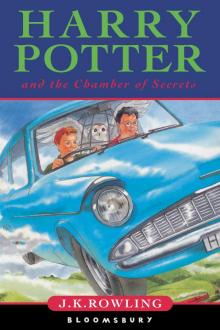 Harry Potter and the Chamber of Secrets
Harry Potter and the Chamber of Secrets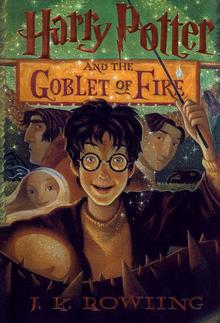 Harry Potter and the Goblet of Fire
Harry Potter and the Goblet of Fire Harry Potter and the Deathly Hallows
Harry Potter and the Deathly Hallows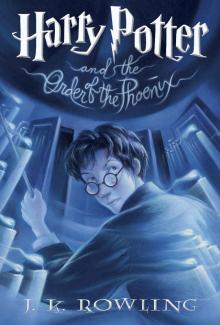 Harry Potter and the Order of the Phoenix
Harry Potter and the Order of the Phoenix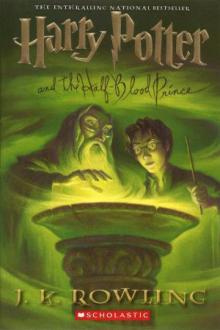 Harry Potter and the Half-Blood Prince
Harry Potter and the Half-Blood Prince Harry Potter and the Prisoner of Azkaban
Harry Potter and the Prisoner of Azkaban Fantastic Beasts and Where to Find Them
Fantastic Beasts and Where to Find Them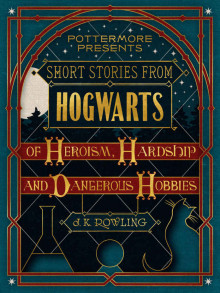 Short Stories from Hogwarts of Heroism, Hardship and Dangerous Hobbies
Short Stories from Hogwarts of Heroism, Hardship and Dangerous Hobbies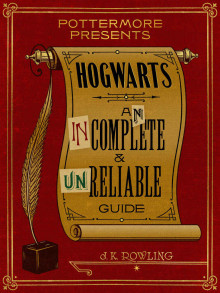 Hogwarts: An Incomplete and Unreliable Guide
Hogwarts: An Incomplete and Unreliable Guide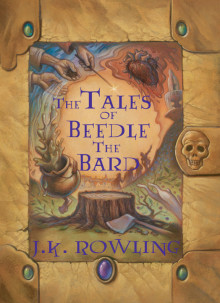 The Tales of Beedle the Bard
The Tales of Beedle the Bard The Casual Vacancy
The Casual Vacancy Harry Potter and the Cursed Child
Harry Potter and the Cursed Child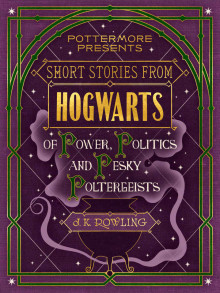 Short Stories from Hogwarts of Power, Politics and Pesky Poltergeists
Short Stories from Hogwarts of Power, Politics and Pesky Poltergeists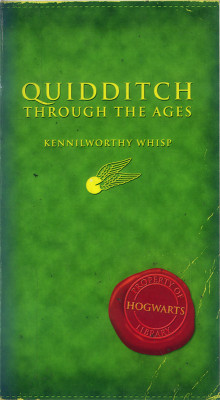 Quidditch Through the Ages
Quidditch Through the Ages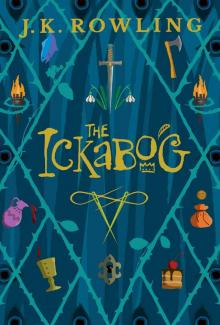 The Ickabog
The Ickabog![Fantastic Beasts, The Crimes of Grindelwald [UK] Read online](http://i1.bookreadfree.com/i/03/19/fantastic_beasts_the_crimes_of_grindelwald_uk_preview.jpg) Fantastic Beasts, The Crimes of Grindelwald [UK]
Fantastic Beasts, The Crimes of Grindelwald [UK]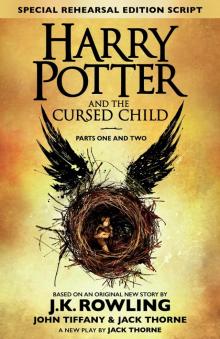 Harry Potter and the Cursed Child: Parts One and Two
Harry Potter and the Cursed Child: Parts One and Two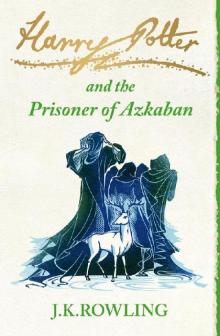 The Prisoner of Azkaban
The Prisoner of Azkaban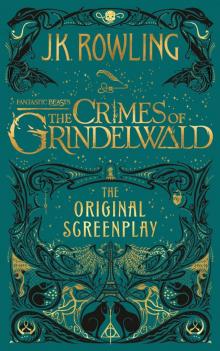 Fantastic Beasts: The Crimes of Grindelwald
Fantastic Beasts: The Crimes of Grindelwald The Hogwarts Library Collection
The Hogwarts Library Collection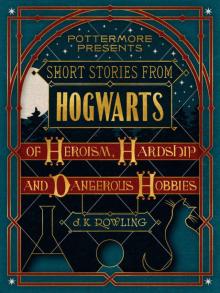 Short Stories from Hogwarts of Heroism, Hardship and Dangerous Hobbies (Kindle Single) (Pottermore Presents)
Short Stories from Hogwarts of Heroism, Hardship and Dangerous Hobbies (Kindle Single) (Pottermore Presents)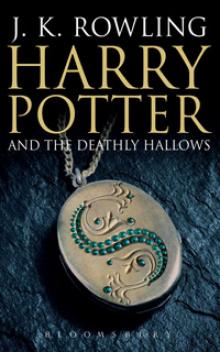 Harry Potter and the Deathly Hallows hp-7
Harry Potter and the Deathly Hallows hp-7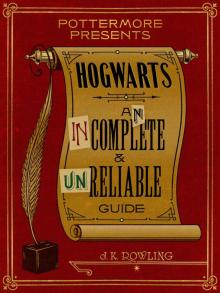 Hogwarts: An Incomplete and Unreliable Guide (Kindle Single) (Pottermore Presents)
Hogwarts: An Incomplete and Unreliable Guide (Kindle Single) (Pottermore Presents)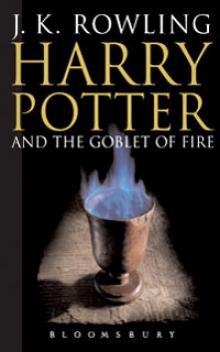 Harry Potter and the Goblet of Fire hp-4
Harry Potter and the Goblet of Fire hp-4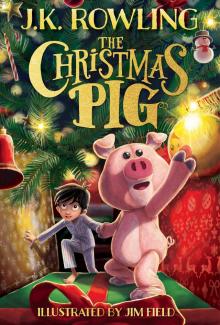 The Christmas Pig
The Christmas Pig Harry Potter and the Sorcerer's Stone
Harry Potter and the Sorcerer's Stone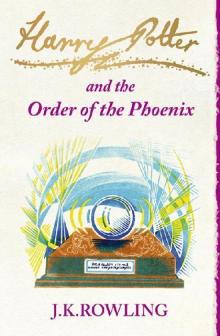 The Order of the Phoenix
The Order of the Phoenix Harry Potter and the Prisoner of Azkaban hp-3
Harry Potter and the Prisoner of Azkaban hp-3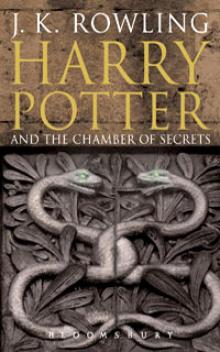 Harry Potter and the Chamber of Secrets hp-2
Harry Potter and the Chamber of Secrets hp-2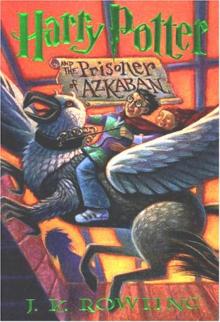 HP 3 - Harry Potter and the Prisoner of Azkaban
HP 3 - Harry Potter and the Prisoner of Azkaban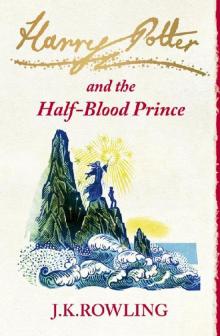 The Half-Blood Prince
The Half-Blood Prince The Hogwarts Collection
The Hogwarts Collection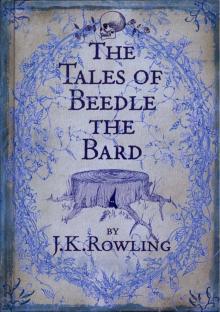 Tales of Beedle the Bard
Tales of Beedle the Bard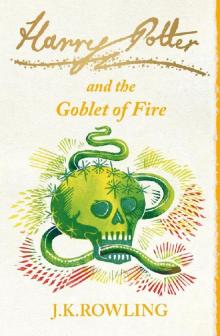 The Goblet of Fire
The Goblet of Fire Harry Potter and the Half-Blood Prince hp-6
Harry Potter and the Half-Blood Prince hp-6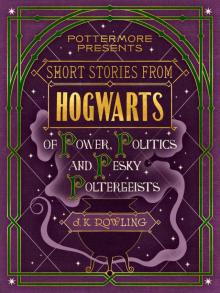 Short Stories from Hogwarts of Power, Politics and Pesky Poltergeists (Kindle Single) (Pottermore Presents)
Short Stories from Hogwarts of Power, Politics and Pesky Poltergeists (Kindle Single) (Pottermore Presents)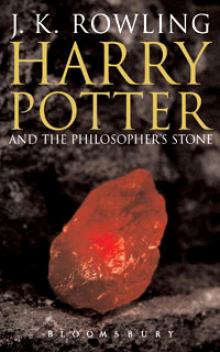 Harry Potter and the Sorcerer's Stone hp-1
Harry Potter and the Sorcerer's Stone hp-1